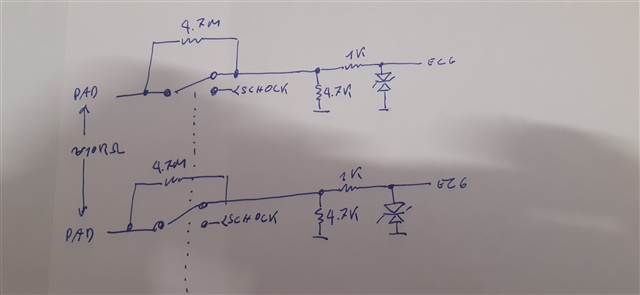Tool/software:
I am developing an automatic defibrillator and the ECG signal must be taken through 2 electrodes only, without the possibility of inserting an RLD connection to reduce the common mode signal. System requirements require that transthoracic impedance be measured both to determine discharge energy and to monitor chest compressions during resuscitation. I didn't find a reference design but only several ideas and I sketched a first scheme as follows, for simplicity I only show one of the two inputs, the other is identical:

Can I have some comments on this implementation?
Using Rldout to reduce the common mode signal is a good idea or is better get 1/2 of V_Ana using a resistive divisor?
For our experience if (for other considerations) i put a 4K7 resistor in parallel with TVS will the ECG signal be significantly disturbed or can I do it without major consequences?
Thanks for your kind reply, Paolo.


